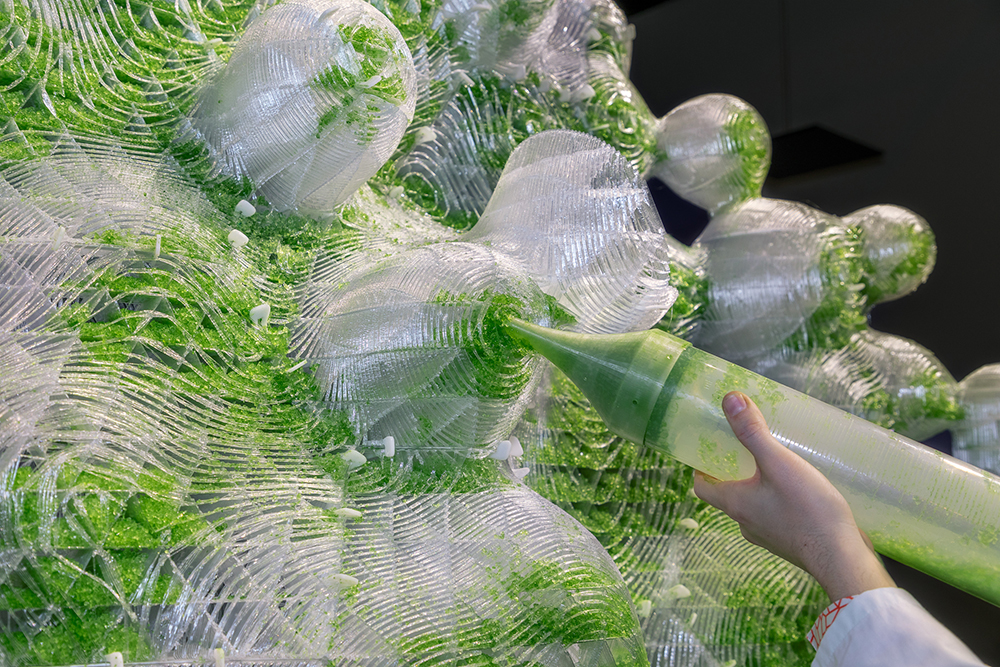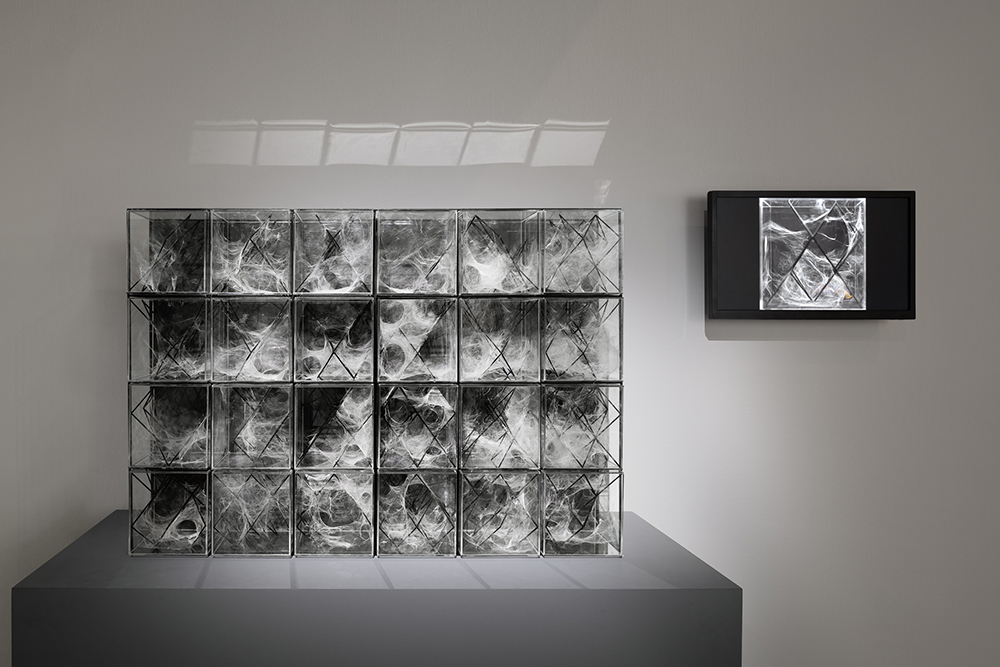ecoLogicStudio, a London-based urban architectural firm, is showcasing its 3D printed “in-human gardens” for the La Fabrique du vivant (The Fabric of the living) exhibition at the Centre Pompidou in Paris.
The two living sculptures, “H.O.R.T.U.S. XL Astaxanthin.g” and “XenoDerma” were created in collaboration with the studio’s research partners: the Urban Morphogenesis Lab at University College London (UCL); the Synthetic Landscape Lab at University of Innsbruck in Austria, and the Wasp Hub at the University of Southern Denmark (SDU).

The Fabric of the living
La Fabrique du Vivant exhibition, which runs until April 15th, is part of a new event called Mutations-Créations. This series aims to retrace the archaeology of the living and of artificial life with new technologies, i.e., 3D printing. The event is curated by Marie-Ange Brayer, head of the Design and Industrial Prospective Department at Centre Pompidou and Olivier Zeitoun.
The curators explained that “in the digital era, a new interaction is emerging between creation and the fields of life science, neuroscience, and synthetic biology.” Thus, the sculptures featured convey the “notion of living” within an artificial environment.
A photosynthetic structure
Claudia Pasquero and Marco Poletto, co-founders of ecoLogicStudio, led a multidisciplinary team to create the H.O.R.T.U.S. XL Astaxanthin.g. The form takes inspiration from colonies of photosynthetic cyanobacteria (plant bacteria).
A digital algorithm was used to simulate the growth of a substratum, an underlying layer particularly of rock or soil, as well as coral morphology. Using large-scale 3D printers, layers of 400 microns, supported by triangular units of 46mm were printed and divided into hexagonal blocks of 18.5cm. Cyanobacteria were then injected on a biogel medium into the individual triangular cells.

The XenoDerma
The second structure, XenoDerma, is made from 3D printed spatial scaffolds. This form was algorithmically designed from spiderweb morphogenesis – the formation of the web.
According to the designers, “Spiders’ minds, in this case, Asian Fawn Tarantulas, do not entirely reside in their bodies, as their webs constitute a form of spatial thinking.” Therefore, XenoDerma mimics the production of silk from Asian Fawn Tarantulas while acting as a terrarium for several of the animals themselves.

Bio-inspired 3D printed formworks
Additive manufacturing has enabled a selection of unique artistic formworks from various materials. Also inspired by biology, last year, Branch Technology, a firm responsible for the Flotsam & Jetsam pavillion for SHoP Architects and WATG Curve Appeal 3D printed house, created the OneC1TY Nashville Bandshell – recognized as the “Largest 3D Printed Structure in the World.”
Don’t forget to make your nominations for the upcoming 2019 3D Printing Industry Awards.
For the lastest 3D printing news subscribe to the 3D Printing Industry newsletter, follow us on Facebook and like us on Twitter.
Seeking 3D Printing Jobs? Join and advertise on our dedicated site now to reach professionals in this industry.
Featured image shows a close-up of the 3D printed H.O.R.T.U.S. XL Astaxanthin.g garden. Photo via ecoLogicStudio.

